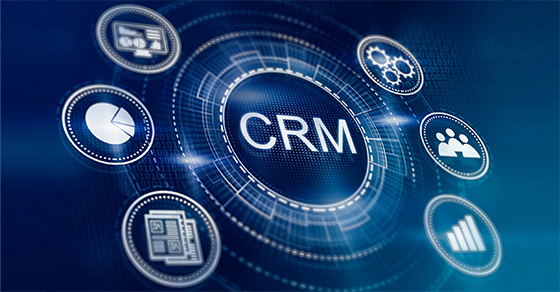
Getting Max Value Out of Your CRM Software
The Rolodex has gone the way of the dinosaurs and it has been replaced with digital technology. To connect with customers and prospects, many businesses now rely on customer relationship management (CRM) software. These solutions grant users easy access to comprehensive information that can enhance marketing efforts and boost sales. This information includes detailed notes on existing connections with targeted individuals and companies along with critical information on current clients.
CRM software also typically includes categorized lists of customers, prospects and other valuable contacts. It goes beyond the standard contact info to collect biographical data, track interactions over time and map connections. You can use it to find out how often a current client purchases from you, or the current vendors of a prospect you are trying to land.
Whether you’re just now shopping for CRM software, or already have a system in place, you can and should take various steps to ensure you get max value out of this technological investment.
Keys to success
For starters, make a point of aligning CRM usage with your company’s overall strategic objectives. For example, if one of your goals is to grow revenue in a certain market by 20%, you could make developing customer/prospect profile reports on the CRM system a stated and measured objective. Track your calls, emails and drop-ins along with the information you gather with each touch. This will create a “profile” for your prospects and determine if they are a business to spend time on, or if you should move on.
Some employees may be skeptical about the value of the CRM while others will be enthusiastic supporters. Encourage “CRM champions” to share their success stories from using the solution with others on your team. “Show, don’t tell” will convince the skeptics to get on board with the new software.
Training is another important factor in successfully implementing CRM software. Introduce your employees to the solution’s benefits by embedding CRM lessons in meetings or training sessions about other topics, such as billing or revenue building. Every bit of prospect/client information helps the organization, not just the sales team.
Some employees may be able to rely on webinars for training. You could also offer “lunch and learn” sessions on topics such as how to best conduct customer interviews and input that information into the CRM system. However, certain employees should receive personalized one-on-one sessions with a trainer to ensure they’ve truly mastered the software. These would include sales and marketing employees who are on the forefront of the CRM software. Remember, the more information you have, the better off your entire organization will be.
It takes time
For many businesses, the introduction of CRM software means not only a transformation of how work is accomplished but also a change in culture. Getting buy-in from the staff doesn’t happen overnight and it may be a struggle for upper management to implement this change. If you see a struggle from some employees, create a small incentive to get them on board with the change. Buy lunch for the team when they hit a certain benchmark or let them leave at 3 pm on a Friday afternoon.
If you have a CRM solution in place, use it to its full potential. If you’re just implementing one now, exercise patience and diligence when training employees to use it. Yeo & Yeo Technology can help you set a reasonable budget for technology purchases such as CRM software and measure your return on investment.
Information used in this article was provided by our partners at Sage.